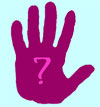The history of the left-hander is not a good one. Since being left-handed is not the norm, it has been thought of as anything from stupidity and clumsiness to the worst evil. The good news is that in at least the modern-day Western countries, things are much, much better, and left-handers are accepted, if not well-understood. Let's investigate what chronology we are able to put together.
Prehistoric and early history
If we look at the earliest evidence, we find that even our prehistoric ancestors appear to have been predominantly right-handed.
- Hand tracings from cave walls, believed to be from Cro-Magnon people, showed 80% to be of the left hand; since the right hand would have been used to trace, this shows an early right-handed dominance (although earlier cave drawings indicate a 50/50 split).
- Other evidence is shown by injuries found in fractures of baboon skull fossils. Here, the vast majority showed injuries consistent with a blow from a weapon held in the right hand of a facing opponent: early man, Australopithecus.
The Old and New Stone Age humans, Paleolithic and Neolithic, used tools and weapons fashioned from natural materials, such as bone, wood and stone. These tools from 2,000,000 through about 5,000 years B.C.E. show designs usable by either hand. Rather than individuals having equally good use of left or right (ambidextrous), this indicates that each individual used the hand he or she preferred, whatever that proportion of the population may have been.
When we reach the Bronze Age, about 3,500-600 B.C.E, the ability to manipulate bronze to make tools changes the situation.
- More complex tools could be crafted from bronze, and worked best with one hand. Some theorize that since these tools were time-consuming and hard to make or replace, they were passed down through the generations. Later users then had to use the tools as they existed, so it is possible that right-handedness became standardized in this fashion.
- Many Bronze age tools show right-handed wear and tear.
Interestingly, in modern-day tribal cultures it seems that handedness has been equally distributed between left and right. Bushmen, Australian aborigines, Bantus and others are examples, and it seems that North American native peoples may have been 30% left-handed, judging from arrowheads and spear blades.
Next we'll take a look on some of the cultural influences on handedness through the ages.
